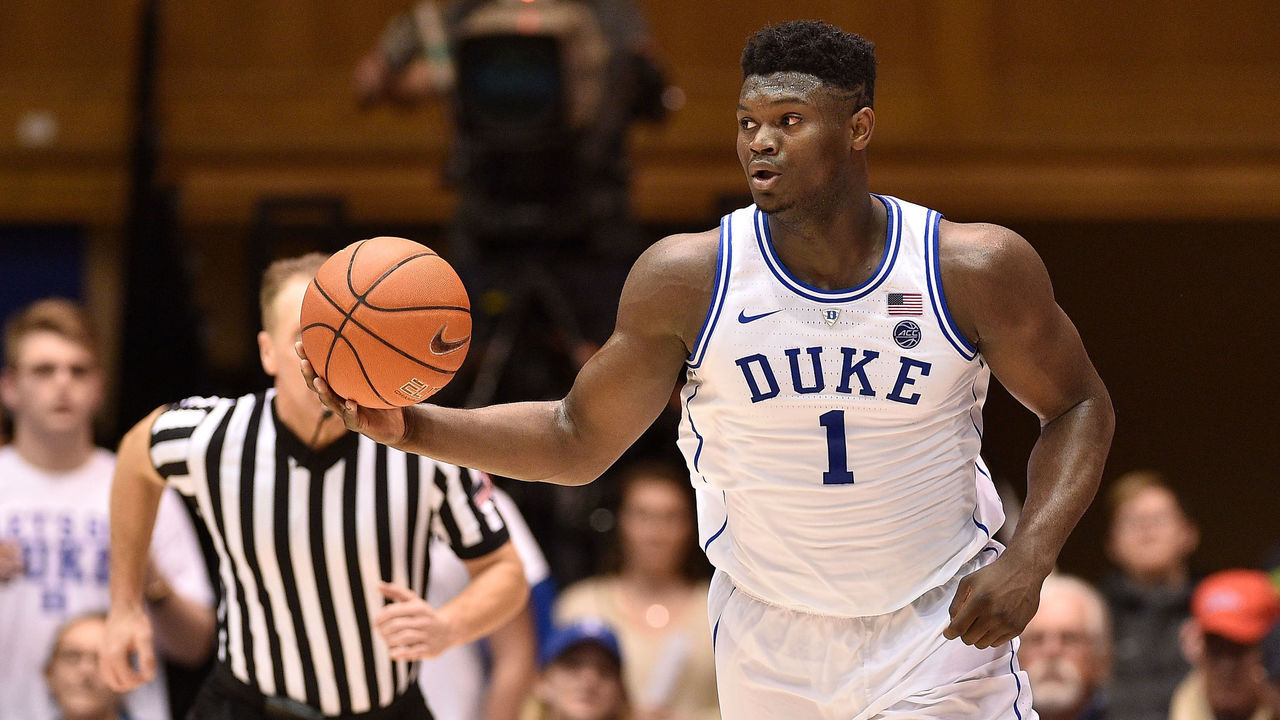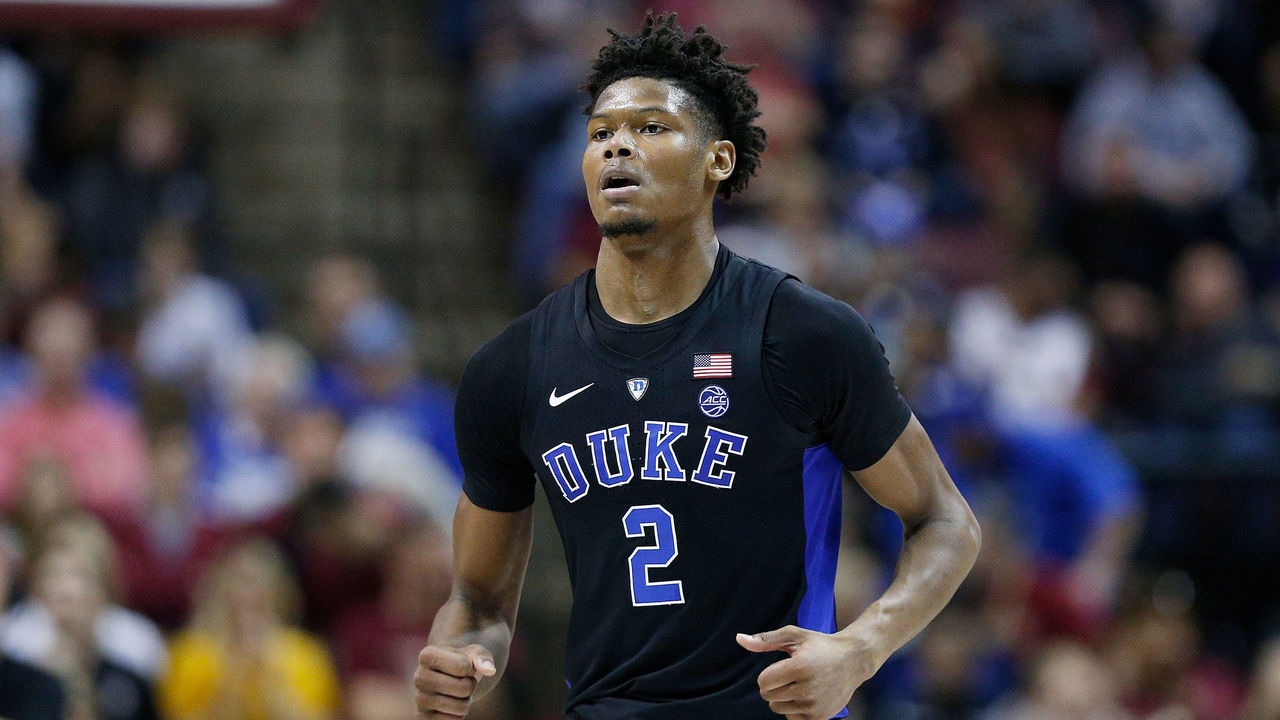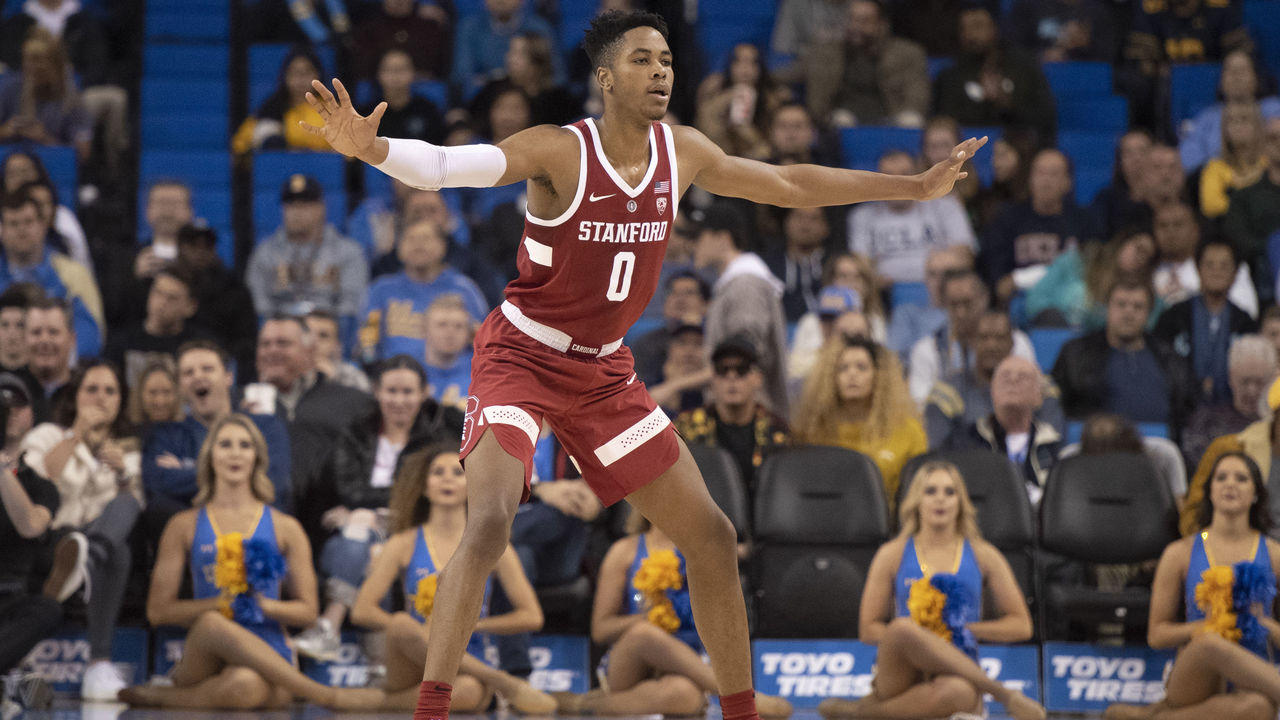Prospect Rankings 3.0: Zion remains dominant, Morant defying expectations
The top prospects remain the same despite some movement as March Madness nears. theScore's Wael Saghir ranks the early favorites to land in the lottery for the 2019 NBA Draft.

1. Zion Williamson - Duke, Freshman, F
It's a delight watching Williamson grow as the opposition becomes increasingly competitive one month into conference play. The tank-like forward dropped a season-high 35 points during Duke's overtime loss to Syracuse, and he followed that with a 27-point performance against Virginia's stingy defense.
There's rarely a player this athletically gifted at the collegiate level, and the 19-year-old phenom has used that to his advantage, scoring on over 75 percent of his two-point field-goal attempts - the highest single-season percentage in NCAA history while taking 10-plus shots per game. In space, he's a one-man wrecking crew, and will easily become an elite NBA transition player.
2. R.J. Barrett - Duke, Freshman, G/F
Inefficiency aside, Barrett is a headache to slow down. Duke simply doesn't have the spacing to support the Canadian's skill set, and he's been forced to take matters into his own hands down the stretch as the Blue Devils' closer. That's why Barrett has games when he misses 22 shots, as he did against Syracuse, 13 of which came from behind the arc.
Nonetheless, his aggressive mentality and willingness to take challenges is why Duke beat Virginia, with Barrett scoring eight of the team's final 11 points in crunch time.
If he develops consistency from the perimeter (he's shooting 32 percent on 6.4 3-pointers per game), Barrett could leapfrog Williamson as the draft's top prospect. For now, he's comfortably slotted well above everyone else in the field.
3. Ja Morant - Murray State, Sophomore, G
Just as he does for his highlight reel throw downs, Morant won't stop rising up prospect rankings.
He's become one of the most explosive scorers in the nation, and now the 6-foot-3 sophomore is stealing attention from Williamson. Morant dropped a career-high 40 points on 17 shots against SIU-Edwardsville, hitting all 21 of his free-throw attempts.
There are reasonable concerns about Morant's thin frame, but his offensive game is so electric that those worries are easy to ignore. He's almost similar to Russell Westbrook, but Morant is far more under control than the 2017 MVP was at his age. It's spectacular watching the 19-year-old turn into the most dominant offensive force in college basketball, leading the nation in assists (10.5 per game), and topping his team in points (24.1) and rebounds (5.6).

4. Cam Reddish - Duke, Freshman, F
It didn't take long for Reddish to go from an elite recruit to a spot-up shooter stuck as the fourth option for the stacked Blue Devils. His struggles can easily be attributed to Duke's roster that turns him into nothing more than a floor spacer, rendering the rest of his abilities irrelevant.
Regardless, the 6-foot-8 freshman remains an integral piece for a title-favorite team, and his absence due to an illness was notable when Duke fell to Syracuse. His point-forward role that should become more valued at the next level has gone mostly unseen this season.
5. Nassir Little - North Carolina, Freshman, F
It's looking like Little is turning the corner for Roy Williams' club. The Tar Heels are a significantly scarier team when their top recruit is aggressive and making plays.
Little is averaging 13.8 points in 18.3 minutes per game over his last three contests, and he's shooting an efficient 55.9 percent from the field. It's critical for him to keep this up if UNC hopes to make a deep tournament run, and most importantly, if the 18-year-old wants to jump into the top three in the draft.
6. Romeo Langford - Indiana, Freshman, G
Indiana's season has become a disaster, with the Hoosiers dropping seven straight. Langford's consistency has drastically dipped during that streak, as he's shooting 37.4 percent from the floor after connecting on 51.1 percent of his field goals over the team's first 14 contests.
He's physically prepared to compete in the NBA, and Langford could turn into a two-way star. However, his struggles from the perimeter are increasingly worrisome, as the 6-foot-6 guard is shooting 23.1 percent on 3.7 attempts per game.

7. De'Andre Hunter - Virginia, Sophomore, G/F
Hunter should be the first specialist off the board in the draft because the 6-foot-7 swingman has mastered the art of 3-and-D play. His 7-foot-2 wingspan has already turned him into a defensive terror.
Meanwhile, Hunter's 3-point shooting continues to impress, as he's connecting on 43.6 percent of his 2.2 attempts per game. Increasing his nightly output will only benefit Hunter's draft stock, especially if he keeps hitting shots at the same rate. The value of two-way specialists doesn't go unnoticed, as Mikal Bridges (drafted 10th overall by the Philadelphia 76ers before being dealt to the Phoenix Suns) played a similar role for Villanova last season.
8. Jarrett Culver - Texas Tech, Sophomore, G
Culver's Red Raiders hit a wall with three straight losses, but that isn't hindering the growing perception that the 6-foot-5 swingman could turn into a top-tier NBA scorer. Scouts are excited about his ability to shoot off the dribble and break down defenses in traffic.
Unfortunately, Culver shot 21.9 percent from the perimeter in January, decreasing his overall percentage from beyond the arc by 10 percent. He's continuing to climb this list despite recent struggles because of his well-rounded play and ability to collapse defenses.
9. Keldon Johnson - Kentucky, Freshman, G
Kentucky is finally looking like a legitimate National Championship contender after a choppy start to the season, and Johnson's two-way play has been the key to their success.
He's connecting on 42.6 percent from three and continues to be a defensive menace. However, Johnson's offensive numbers have dipped, and he's failed to crack the 10-point plateau in three of his last seven contests. Nonetheless, his versatility and value for the surging Wildcats stand out.

10. Rui Hachimura - Gonzaga, Junior, F
Hachimura oozes potential, even though he's one of the oldest players on this list. The Japanese forward is among the favorites for National Player of the Year with Gonzaga continuing to annihilate the West Coast Conference, averaging a 31-point margin of victory in seven conference games.
The team's success has given Hachimura a break, as he's averaging just 29.4 minutes despite being among the best talents in college basketball. His per-40 numbers - with Hachimura averaging 27.1 points and 8.5 boards - paint a better picture of his dominance.
11. Bol Bol - Oregon, Freshman, C
Bol is in a strange position after being ruled out for the remainder of the season with a foot fracture. The 7-foot-2 center may be the most versatile player in the draft, but a serious injury for someone with Bol's long, skinny body could be traumatic and career-changing.
Any team interested in the son of former NBA big man Manute Bol will have to tread cautiously, and possibly prepare to sit the potential lottery pick for an entire season.
12. Darius Garland - Vanderbilt, Freshman, G
Similar to Bol, Garland suffered a season-ending injury that will hurt his draft stock. The 6-foot-3 guard was impressive during his short five-game career with Vanderbilt, showing off excellent 3-point shooting while hitting 47.8 percent on 4.6 attempts per game.
Garland's average athleticism and thin frame may stop him from becoming an elite NBA point guard, but his well-rounded offensive game and high on-court intelligence should help teams quickly forget about his MCL tear.

13. KZ Okpala - Stanford, Sophomore, F
Okpala is forcing his way into the lottery with excellent two-way play while stuck on an average Stanford squad. The 6-foot-9 forward is skilled offensively, with deceptively good footwork, above-the-rim athleticism, and a consistent spot-up jumper. Defensively, Okpala is a pest, and he can disrupt passing lanes and get out in transition to finish fast breaks.
Through 19 appearances in his second season with Stanford, the 19-year-old is averaging 17.6 points and six boards, while hitting 44.8 percent from beyond the arc - a vast improvement from connecting on just 22.6 percent of his attempts as a freshman.
14. Kevin Porter Jr. - USC, Freshman, G/F
Porter drew attention from scouts with his high ceiling and scoring potential, and the build of a prototypical two guard. However, character issues are damaging his draft stock, and his struggles since returning from a two-game team-issued suspension haven't helped his cause.
Porter kicked off the season with five-straight double-figure scoring performances, but he's only surpassed 10 points once since. His mental lapses on both ends and failure to understand team concepts could continue harming his draft outlook.
HEADLINES
- Jay Wright not interested in Knicks' head coaching vacancy
- Grizzlies' Edey to have ankle surgery, could miss start of next season
- How do the Pacers keep doing this?
- Toronto can land Giannis, but Raptors fans must be realistic about the price
- Draymond: Mavs landing No. 1 pick 'may be a little suspicious'